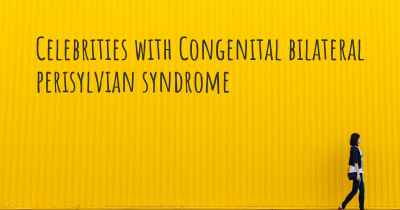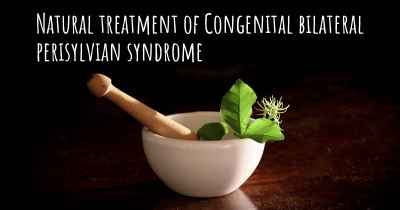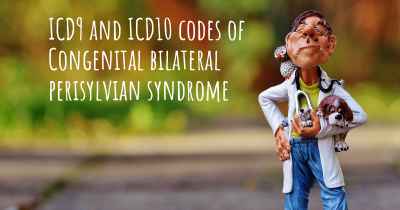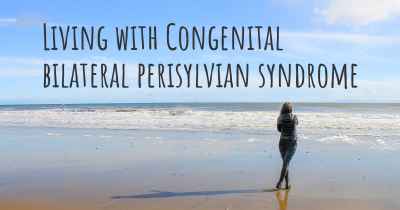What is the history of Congenital bilateral perisylvian syndrome?
When was Congenital bilateral perisylvian syndrome discovered? What is the story of this discovery? Was it coincidence or not?

Congenital bilateral perisylvian syndrome (CBPS) is a rare neurological disorder that affects the development of the brain. It is characterized by a range of symptoms, including difficulties with speech and language, seizures, and motor impairments. CBPS was first described in the medical literature in the early 1980s, and since then, researchers have made significant progress in understanding the condition.
The discovery of CBPS:
The first documented case of CBPS was reported in 1981 by Dr. William Dobyns, a pediatric neurologist. He described a 9-year-old boy who had severe speech and language difficulties, as well as seizures. Further investigation revealed abnormalities in the perisylvian region of the brain, which is responsible for language processing. This led to the identification of CBPS as a distinct syndrome.
Genetic basis:
Research has shown that CBPS is primarily caused by genetic mutations. The most common genetic cause of CBPS is a mutation in the SRPX2 gene, which is involved in brain development. This mutation leads to abnormal brain structure and function, particularly in the perisylvian region. However, not all cases of CBPS can be attributed to SRPX2 mutations, suggesting that there may be other genetic factors involved.
Clinical features:
CBPS is characterized by a range of clinical features that can vary in severity from person to person. The most prominent feature is difficulties with speech and language. Individuals with CBPS often have a limited vocabulary, struggle with grammar and syntax, and may have difficulty articulating words. They may also have problems with reading and writing.
In addition to speech and language difficulties, CBPS can also cause motor impairments. These can include weakness or stiffness in the muscles, coordination problems, and difficulties with fine motor skills. Seizures are another common feature of CBPS, with some individuals experiencing frequent seizures while others have infrequent or no seizures at all.
Diagnosis and management:
Diagnosing CBPS can be challenging due to its rarity and the variability of symptoms. A comprehensive evaluation is typically required, including a detailed medical history, physical examination, and neuroimaging studies such as magnetic resonance imaging (MRI) to assess brain structure.
There is currently no cure for CBPS, so treatment focuses on managing the symptoms and improving quality of life. Speech therapy is a key component of management, as it can help individuals with CBPS improve their communication skills. Occupational therapy and physical therapy may also be beneficial in addressing motor impairments.
Research and future prospects:
As CBPS is a rare disorder, research on the condition is limited. However, ongoing studies are aimed at further understanding the genetic basis of CBPS and identifying potential therapeutic targets. Advances in genetic testing and neuroimaging techniques may also contribute to earlier and more accurate diagnosis of CBPS in the future.
In conclusion, Congenital bilateral perisylvian syndrome is a rare neurological disorder characterized by difficulties with speech and language, motor impairments, and seizures. It was first described in the early 1980s and is primarily caused by genetic mutations, with the SRPX2 gene being the most common genetic cause. Diagnosis can be challenging, and treatment focuses on managing symptoms through therapies such as speech therapy. Ongoing research aims to further understand the condition and improve diagnostic and therapeutic approaches.
Posted Aug 20, 2017 by Momof2miracles Jess Sundquist 4256








